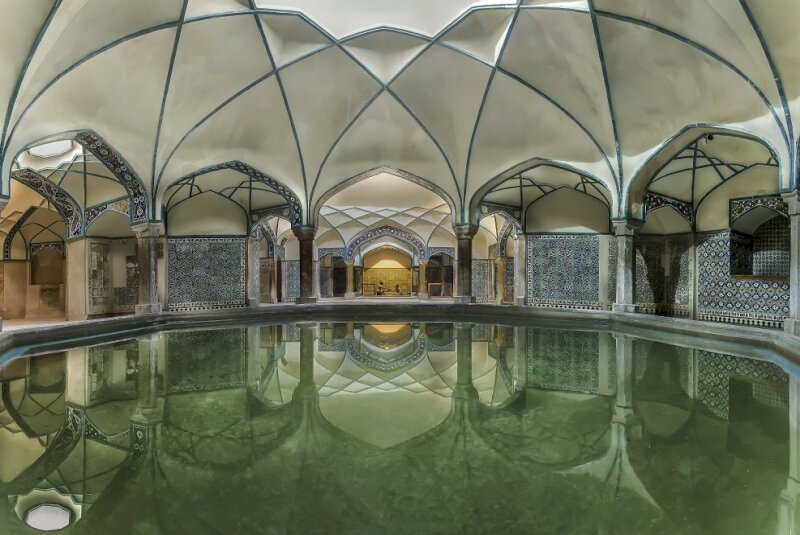Iconic public bathhouse undergoes restoration in southeast Iran

TEHRAN – Hammam-e Ganjali Khan, which was once an iconic public bathhouse in southern Kerman province, has undergone some rehabilitation works, the deputy provincial tourism chief has said.
The project involves repairing tilework in both male and female halls and chambers of the historical bathhouse, Mojtaba Shafiei announced on Tuesday.
A budget of 700 million rials (about $17,000 at the official exchange rate of 42,000 rials per dollar) has been allocated to the project, the official added.
The hammam has been repurposed into an anthropology-like museum in which wax dummies illustrate the workings of a traditional bathhouse. There is also a display case of antique washing utensils.
The Safavid-era (1501-1736) structure is a part of the historical Ganjali Khan complex, which is composed of a madrasa, a mosque, a caravanserai, a water reservoir, and a labyrinth bazaar, all centered on a large public square.
Covering an area of 11,000 square meters, the compound was built upon the order of Ganjali Khan who governed Kerman and some neighboring areas during the late 16th to early 17th centuries under Safavid Shah Abbas I (r. 1571-1629).
With an entrance at the northeastern corner of the square, the mosque though is small in size enjoys elaborate tilework and arabesque designs. It boasts a gilt-pattern inner dome and honeycomb windows.
The bazaar is ornamented with exquisite plasterwork and wall paintings that are well-preserved although they are roughly 400 years old.
The caravanserai is based on the four-iwan typology, with guest rooms constructed around a courtyard. Shah Abbas I (1571-1629) is credited with building a network of caravanserais across Iran during the much later Safavid dynasty.
Bathhouses or ‘hammams’ in Iran were not only places for bathing and cleaning up. They had a social concept for people who gathered at these places weekly.
It was a place where people talked with each other about their daily life and shared humor and news. There are still bathhouses in Iranian cities but they do not have their social function anymore since most people have bathrooms in their homes due to the modern lifestyle.
Some cities had separate bathhouses for men and women. They were usually built next to each other. However, there were some bathhouses, which were used by men and women at different times of the day.
There were also male and female public bathhouses; at daybreak, a longhorn (booq-e javaz) was blown to announce that the bath was ready. Men came to the baths from daybreak till the afternoon. Women could use the bathhouses from then to sunset. In some cases, five days were allocated to men and two days to women.
Persian literature is full of proverbs, narrations, and folk stories about bathhouses, which indicate the importance of the place in the past time.
The big and sprawling Kerman province has been a cultural melting pot since antiquity, blending Persians with subcontinental tribe dwellers. It is home to myriad historical sites and scenic landscapes such as Bazaar-e Sartasari, Jabalieh Dome, Ganjali Khan Bathhouse, Malek Jameh Mosque, and Shahdad Desert to name a few.
ABU/AFM
Leave a Comment